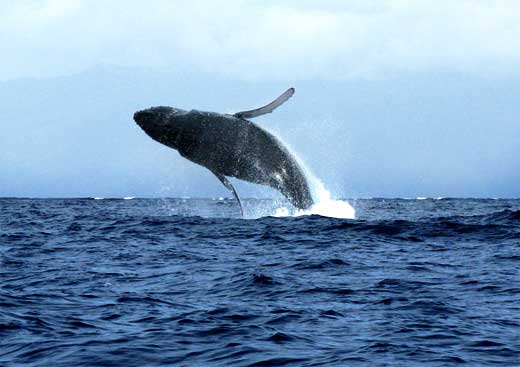Introduction: Sandy beaches form many of the world's seashores, dividing the vast ocean from the land. This sand can come in many consistencies and colors. It can be anything from powdery to gravelly, raning in color from yellow to red to black to green. Sand can come from two different sources, living and non-living. Biogenic sand comes from sources that once lived: coral, skeletons, shells, etc. Detrital sand originates from nonliving sources: rocks and minerals. And though you may not be able to tell these two types of sand apart just by looking, there is a way to check. If you mix biogenic sand - which contains calcium carbonate (CaCO
3) - and vinegar (CH
3COOH), you get a number of results. Namely water (H
20) calcium acetate (Ca(CH
3OOH)
2), and carbon dioxide (C0
2). If the sand is indeed biogenic, the carbon dioxide will cause the sand to bubble slightly and make a crackling sound. If neither of these reactions happens, then the sand is detrital.
Question: Are there beaches of both biogenic sand and detrital sand in South Maui, and if so, which are which?
Hypothesis: I believe that the ever-popular Big Beach consists primarily of biogenic sand. There is a dead coral reef that runs parallel to the shoreline, and the infamous powerful waves at Big Beach could easily be responsible for eroding it. The sand is also very light and fine, traits often found in biogenic sand. Meanwhile, the sand at the Makena Black Sand Beach should be at least partially detrital, because of the large, worn cliffs on one side of the beach. If my hypothesis is correct, then we should observe a chemical reaction between the vinegar and the Big Beach sand, and a much smaller reaction with the Black Sand Beach sand.
Materials:
- Sand samples
- Acetic acid (vinegar) (("the good stuff"))
- Clipboard
- Writing utensil
- Data sheet
- Small beaker
- Bulb syringe
Procedure:
- Go to beaches outlined in hypothesis
- Observe beach areas for clues as to whether the sand will be detrital or biogenic, write observations on data sheet
- Collect sand sample (make sure to mark which beach it is from)
- Return to lab with multiple sand samples
- Pour first sand sample into small beaker, only enough to ensure it covers the bottom
- Carefully squeeze exactly 20 drops of vinegar (one milliliter) onto the sand using the bulb syringe
- Watch the sand for light bubbling and listen carefully for crackling sounds (if you can see or hear these reactions, then the sand is biogenic)
- Record observations
- Repeat steps 6-8 with second sand sample
- Compare and conclude
Observations:
"Big Beach"

The sand at Big Beach is mostly very light and very fine. When you look closely, you can observe small pieces of shells mixed in, along with a few black and red colored grains of sand. There is a dead coral reef that runs parallel to the shore here, and it is likely that the large shorebreak at this beach contributes greatly to its erosion. At either end of the beach, there are relatively small lava-rock outcroppings, but neither are very prominent.

The southern half of Big Beach.
 The northern half of Big Beach.
The northern half of Big Beach."Black Sand Beach"

The sand here is multicolored, containing everything from black to red to white to pink sand. However, it is mostly red and dark grey, like the large cliffs on its left side. Though there is a large reef a little ways offshore, it is mostly alive and thus doesn't erode much. There are quite a few white shell fragments mixed in with the dark sand, which is relatively fine but not as fine as that of Big Beach.
 The cliffs on the southern half of the beach. They likely contribute to the darkness of the sand.
The cliffs on the southern half of the beach. They likely contribute to the darkness of the sand.
Data:
Big Beach:
Sand: Very light yellow-brown. Fine and powdery.
Reaction: Small bubbles and light crackling.
Black Sand Beach:
Sand: Dark grey with grains of red and light sand. Slightly coarser than Big Beach's.
Reaction: Small bubbles and light crackling.
Conclusion:
The chemical test revealed some interesting results. Though the sand colors and consistency were nearly opposite each other, both samples proved to contain significant amounts of biogenic sand. I predicted that the Black Sand Beach sample would consist at least partially of biogenic sand, but I assumed that portion of the sample would be minimal. I hoped that we would be able to differentiate the two samples by comparing the volume and intensity of the crackling and bubbling when we added vinegar to them. Theoretically, the sample with less biogenic sand should have a smaller reaction. Either this is not the case at all, or both Big Beach and the Black Sand Beach have equal amounts of biogenic material in their sand makeup (extremely doubtful.) I still believe that black sand is mostly detrital, but unfortunately this particular method of testing neither confirmed nor disproved this hypothesis.
Possible Sources of Error:
There are not many possible sources of error in this particular experiment; I can only think of two. Firstly, when collecting sand samples, we may have collected from sand deposits on the beach that, for some reason or other, contained more biogenic material than the rest of the beach. This, however, is quite doubtful, since generally sand is well balanced. Second (and more plausible), we could have accidentally applied more than a millileter of vinegar onto black sand beach sample, thus altering the intensity of the reaction and making it equal to that of the almost fully-biogenic Big Beach sand.























